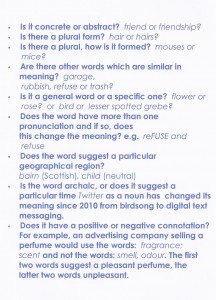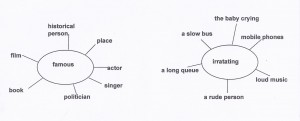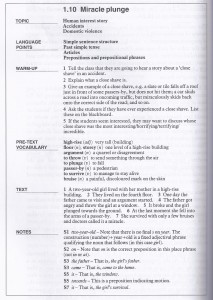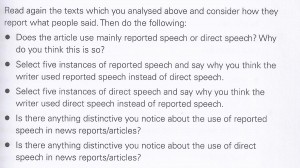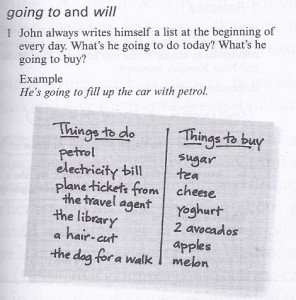TEACHING VOCABULARY
Jane Spiro has compiled a useful checklist for teachers to use when looking at new nouns with students’, enabling students to understand form and function. It may also be something helpful to pass onto students to use independently as they’re learning English.
McCarten 2007, [Teaching Vocabulary: lessons from the corpus, lessons for the classroom] identifies further useful criteria to consider when examining different lexis; Frequency –high frequency around 3,000 mid-frequency words around 6,000 and low frequency 1,000. Native English speakers know between 12,000 – 20,000 words. Differences: Are words used differently in written and spoken form? Probably is frequently used in spoken English but rarely in newspapers. However is more frequent in written English than spoken. Contexts of use – Comparing ‘Hi‘ with ‘Hello‘. Collocation: For example ‘heavy smoker‘. Grammatical patterns: Word usage in grammar as with words commonly used with the present perfect; just, yet, never, already, ever, so far, up to now, recently, since, for. Strategic use: Discourse and the correct English to use to interact confidently and appropriately. A way of tailoring materials for any one group of learners is to choose reading texts that interest the students and create pre-reading activities and vocabulary based activities for use before and after reading.
Coursebooks can be evaluated for their vocabulary content, what are the aims of vocabulary teaching in the book? How is the books lexical syllabus organised? Is there adequate provision for teaching vocabulary? Tricia Hedge suggests ‘building a word network’ highlighting aspects of the meaning of a word, I adapted Anglin’s 1985 model for the word car, please follow the link Car. The model is an example of a mind-map that can be used to encourage students to extend their vocabulary when given just one word, please see below for a simplified version for lower level students;
More Mind Maps
This can offer students a cognitive hold [Schouten-van Parreren] for students to be able to remember what they are learning as vocabulary is learned in context not in isolation. Use of Corpus vocabulary is essential in the classroom as it shows the real and modern use of English, form, connotation and meaning. This will in turn enable students to understand communications in English and aid fluency and understanding. Another factor to strengthen student understanding is the ‘grammar of words’. “Without grammar very little can be conveyed, without vocabulary nothing can be conveyed” Shamshirian (2015). It should also be noted that this point is supported by the output theory which suggests learners move from semantic to syntactic processing.
Corpora can also be useful when teaching grammar, Swan (2001, p.182) notes that “there are deeper underlying patterns which guide native speakers’ instinctive choices. If we can tease out these patterns and convey them to our students, everything will fall into place…” One book in particular recommended by Jane Spiro is Thornbury’s Natural Grammar. The book uses the 100 most common words from the British National Corpus. It teaches the grammar of words with simple explanations and exercises allowing students to check their understanding, I found exercises relating to say and tell extremely effective when teaching a class full of confused exam students. Grammar can become a ‘Liberating Force’ (Widdowson 1990) through materials and methodology, a method of interest is grammaticization (Cullen 2008) this allows students to apply grammar to lexis, using independent choices to bolster their grammar in areas where they may be weak, becoming aware of gaps in their knowledge.
Cullen [Teaching Grammar as a Liberating Force – 2008] suggests:
“Expanding newspaper headlines into short news paragraphs; combining short, non-complex sentences to form a linked paragraph; and using a picture story with word prompts to compose a short narrative”.
[A Comic Master comic script ideal for a picture story]
Thornbury suggests:
Dictogloss; Students have a short story told/dictated to them by their EFL/ESOL teacher, they then rewrite a story by using a few important details they have noted down.
[Above is an example of another dictation exercise which attends to the past simple whilst pre-teaching unusual vocabulary.]
NOTICING AND REPORTED SPEECH
Noticing grammar (the Noticing hypothesis – R. Schmidt) can play an important role in the teaching of grammar in the EFL classroom. One particular example is teaching Reported Speech, which Jeff Stranks notes worked with a number of important reporting verbs. Teaching this grammar point through ‘explicit instruction’ can lead to confusion and could be more succinctly and clearly taught through noticing., Tomlinson sets out questions that can be used to teach reported speech from a suitable text;
[Developing Materials for Language Teaching – Tomlinson]
The “rate of learning and linguistic accuracy increase when learners experience explicit grammatical instruction compared to uninstructed learners”. Ortega further talks about students’ readiness to learn grammar, which I feel can be gently aided with noticing exercises such as those suggested for reported speech above. A useful bench mark when examining different areas of grammar to teach is the term markedness highlighted by Rod Ellis to determine “whether a grammatical structure is in some sense frequent, natural and basic or infrequent, unnatural, and deviant”. Grammatical forms can be internalized by teaching students pedagogical rules which learners are already familiar with.
FUTURE FORMS - WILL & GOING TO
Students’ cognitive learning styles will affect the way in which learners respond to different approaches to teaching grammar, “the context in which the grammar is embedded needs to be generally useful and appropriate to the needs of the learner group.” For example, The diagram above is a useful tool when teaching future forms to low level learners.
Cullen, R. (2008) Teaching Grammar as a Liberating Force – ELT Journal
Ellis, R. (2006) Current Issues in the Teaching of Grammar: An SLA Perspective. TESOL Quarterly 40(1): pp.83-107
Hedge, T. (2000) Teaching and Learning in the Language Classroom. Oxford University Press Chapter 4
McCarten, J. (2007) Teaching Vocabulary: Lessons from the Corpus, Lessons for the Classroom. New York: Cambridge University Press.
Mishan, F. & Timmis, I. (2015) Materials Developent for TESOL. Edinburgh: Edinburgh University Press. (Chapter 8: Materials for vocabulary and grammar.pp.141 – 162)
Nation, P. (2013) Materials for teaching Vocabulary. In Tomlinson, B. (ed). Developing Materials for Language Teaching. (2nd ed) London: Bloomsbury. pp 95 -118.
Spiro, J. (2013) Changing Methodologies in TESOL. Edinburgh: Edinburgh University Press. (chapter 5 Vocabulary in Methods)
Stranks,J. (2013) Materials for the teaching of grammar. In Tomlinson, B. (ed). Developing Materials for Language Teaching. (2nd ed) London: Bloomsbury. pp 95 -118.
